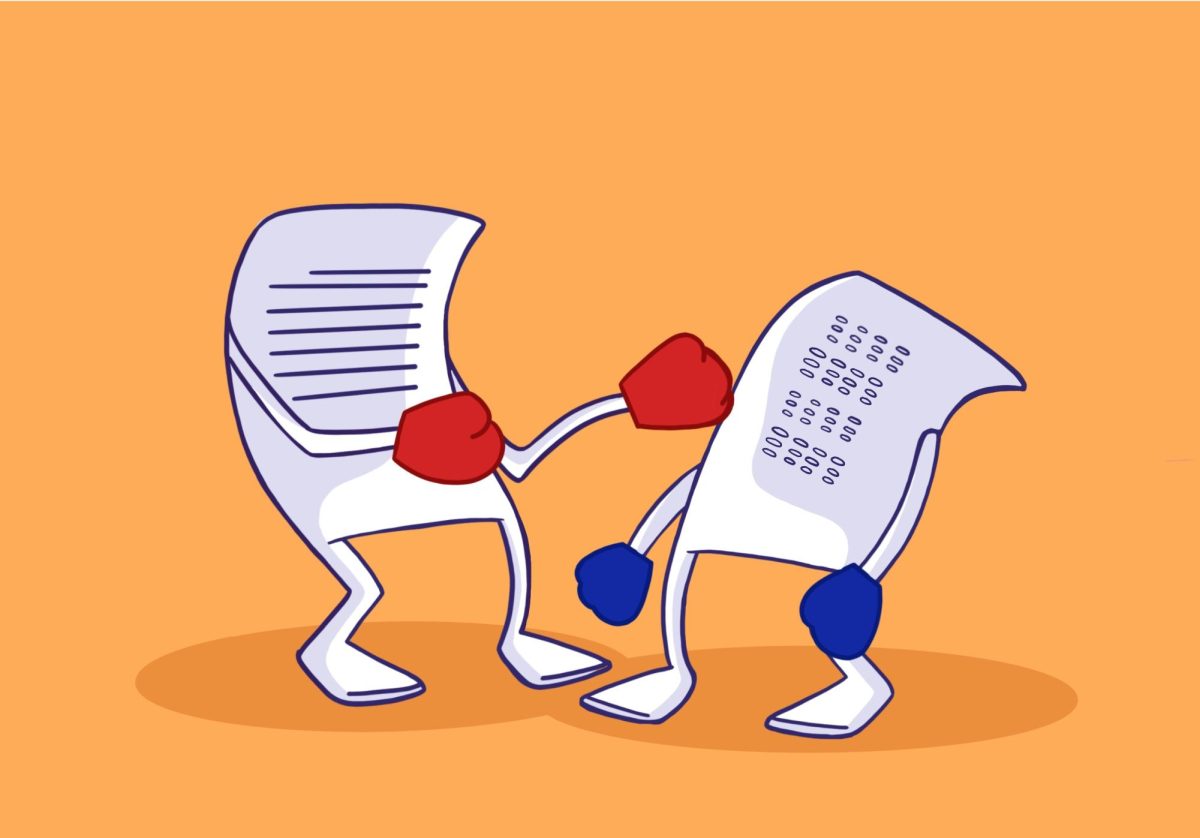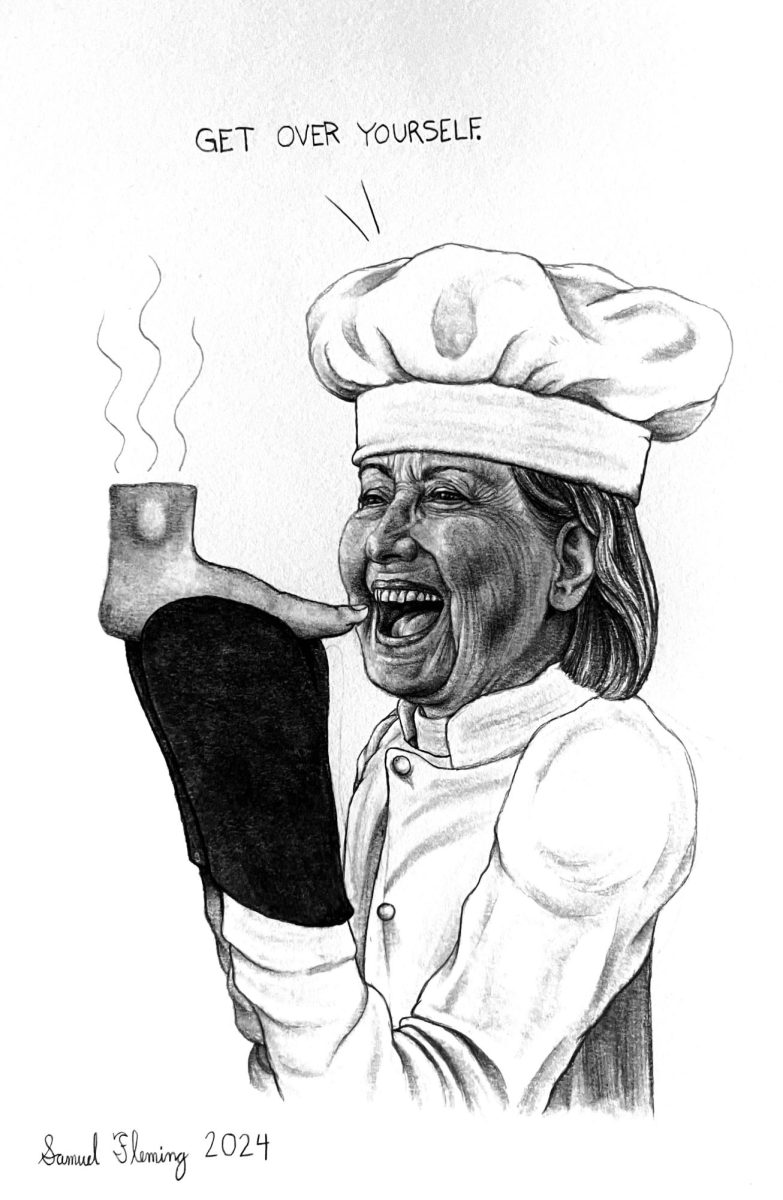In the wake of George Floyd’s death by the agency of the Minneapolis Police Department, monumental protests have assembled in the fight against police violence and white supremacy. As Minnesotans gathered in the streets those first three days, Derek Chauvin, the officer recorded kneeling on Floyd’s neck, walked free. The uproar for change was met with passive condolences from the state — until property started taking hits, at which point armed forces were dispatched to the Twin Cities. The people holding the city accountable faced severe, painful consequences before George Floyd’s killer did.
Police violence exerted at peaceful protests opposing police violence — I promise, the irony is lost on no one.
Before detailing the acrimony demonstrated by law enforcement officers at the Lake Street protest on Friday, May 29, I must stress that my personal experience of the Black Lives Matter protest is peripheral to the movement at large. The collective action happening on the streets of Minneapolis (and around the world) concerns the systemic and relentless brutality that Black and Brown communities face at the hands, batons and guns of police officers.
Law enforcement’s lack of accountability and proclivity to protect their own, and the state’s incessant suppression of voices from marginalized communities, eliminates avenues for judicial recourse. While inadequate police reparations show indifference to the loss of Black life, protesters gather by the thousands to reiterate that Black Lives Matter — to make the realities of structural racism and police violence unavoidable.
I’m an ally. I’m writing this account of my experiences to shed light on the outrageous violence currently inflicted on peaceful protesters. This is what took place on May 29 as we collectively demonstrated and mourned.
11:00 a.m.
My roommates and I join city residents on the sidewalks, armed with brooms and Windex, hoping to remove some of the debris leftover from the previous night. We pick up cleaning supplies and items to donate and then head to the Seward neighborhood. Except, the Seward neighborhood has already been taken care of by other residents, so we head to Midway. Midway is cleaned up too, so we drive to the East Lake Library. The library and all of East Lake Street is blocked off by Minnesota State Patrol officers in riot gear, surrounded by military vehicles and the National Guard. Neighborhoods impacted by the rebellion are all attended to by community members or obstructed by law enforcement. The dichotomy between community and cops is unmistakable.
What’s the aim of policing a community you don’t even care to rebuild?
We drop supplies at Holy Trinity Church, which is functioning as a donation drop-off and pickup site, medical station and gathering place. Almost every civilian bears a mask.
12:00 p.m.
News that Derek Chauvin has been taken into custody wafts through the crowd in murmurs. Standing before tactical tanks and a blockade of patrol officers (none of whom are wearing masks), reporters ask protesters what they think of the charges and how it might affect the day’s demonstrations.
Chauvin’s arrest does nothing to dismantle the system that enables, creates and rewards officers like him. Chauvin’s arrest does not acknowledge the centurieslong pattern of law enforcement brutalizing and murdering Black, Brown and Indigenous people. Chauvin’s arrest feeds into the notion that funneling a “bad apple” into the prison system solves the injustice, thus feeding into the prison industrial complex — which by and large vitiates marginalized communities. Chauvin being arrested by the administration we are fighting against indicates that yes, demands for accountability are being heard. But, we are not totally listened to. To accept Chauvin’s arrest as victory negates the structural malice baked into the system.
So, some protesters tell the journalists: It is not enough. We are not done.
3:00 p.m.
We kneel and have eight minutes of silence in memory of George Floyd.
Young Black activists, community leaders and artists take turns speaking into the megaphone. The space is overcome with love and unity. Their personal stories and poems pay tribute to why we’re all here and honor George Floyd’s memory. With spirits high, we yell, we chant, we cry: George Floyd. George Floyd. George Floyd.
5:00 p.m.
Word of mouth notifies us of a citywide 8:00 p.m. curfew.
“My dad says I can stay out until the street lights come on,” a protester says into a megaphone, prompting the crowd of mostly young people to cheer “you’re not my dad” to a siege of armed officers for a moment.
7:00 p.m.
Allies are called up front to form a human shield between law enforcement and Black protesters. Goggles are distributed. I’m face to face with a Minnesota State Patrol officer who looks my age. She avoids eye contact, but I think we have the same eye shadow.
7:15 p.m.
“We are peaceful, we are unarmed. We pose no threat,” rings throughout the protesters.
Two officers in front of me exchange whispers and then kneel as they reach for something in their holster. Unease ripples through the group, still raw from the previous night’s brutality.
“What’re they doing?” bounces to “I don’t like that,” to “they’re grabbing gas!”
I peer behind me and see that the crowd has bolted. I follow, sprinting, until I trip on a rock 30 feet away and slice the palm of my hand.
No tear gas. We reassemble and lock arms. Two men wearing priest attire, insisting they flew out from New York to help ‘keep the peace,’ attempt to soften the tension by saying the police are just doing their job and preparing for curfew.
7:25 p.m.
State patrol retreats, slowly walking backwards toward the Minnehaha Avenue and Lake Street intersection. It’s unclear why, considering curfew doesn’t start for another half hour and the protest poses no threat. Walking backwards might allow them to claim they’re on the defensive, but their clandestine departure provokes the group by design. There’s been zero communication regarding officers’ objective and strategy.
Keeping a steady distance of 30 to 40 feet, we march in their direction.
“We are peaceful. We are unarmed. We pose no threat.”
7:45 p.m.
Tear gas launches at us as law enforcement pass remnants of the Third Precinct. The first canister hits the pavement and paints the crowd a yellow shade of ‘less lethal’ poison. A second canister explodes in the air above us. A third and fourth explode, but now it’s hard to see and breathe because the gas is so thick. I stop counting. This space of healing and unity is suddenly a war zone. In the face of uninterrupted blasts and aluminum tinkering on asphalt, protesters scream his name: George Floyd. George Floyd. George Floyd.
A medic with baking soda solution sprays my face while the crowd forges ahead. We’re between what’s left of Minnehaha Liquors and the police station.
7:50 p.m.
The smoke is blue and green now. Without any context, the scene looks like the world’s most dangerous color run.
“It’s not even curfew,” echoes a group of protesters who pulled out their phones to record. Hundreds of Minnesota State Patrol, National Guard and military tactical vehicles sweep through the intersection while pelting tear gas and other blunt impact projectiles at observing protesters. Most of us are kneeling with our hands up. Some of us draw back, pull down our masks and heave.
Ripped from a 10th grade dystopian novel, officials continue firing chemical weapons at us as tactical vehicles cast this message over the PA system:
“…You are in violation of unlawful assembly. You are ordered to cease your unlawful behavior and disperse peaceably from the area immediately. If you continue to obstruct, resist and or interfere with peace officers, you will be violating Minnesota State Statute, and you will be arrested.”
We’d officially been informed of curfew by law enforcement two minutes before 8 p.m.
8:02 p.m.
Our group merges with three other demonstrations as we march onto East Lake Street. ‘Less-lethals’ and fireworks are rapid firing at this point, forcing the group to ebb and flow, march and retreat, march and retreat.
Throughout, we say his name: George Floyd. George Floyd. George Floyd.
For caution’s sake I’m stopping my account here.
Ultimately, the community showed up, and the cops kept us out. People came together and the state set a curfew, then didn’t even wait until then to inflict violence.
‘Less-lethal’ weapons feign a moralistic strategy to dispersing domestic “riots” because they don’t kill as many people, but they essentially recreate the circumstances of combat. When explosives are being shot at us unprompted and blowing up at such a high rate, you don’t know for sure if the next blare will be nonlethal. They sound like real bombs, and “peace officers” are dressed for war. Chemical warfare breeds an environment which generates and reproduces trauma. ‘More-or-less-lethal’ weapons are demoralizing psychological warfare.
And while the armed insurgence rattled me to the core, I was only subjected to this kind of bureaucratic violence for the length of the protest. I can pluck myself from the context of extreme force. I get to go home, and I don’t fear for my life if I get a speeding ticket on the way. BIPOC aren’t granted that privilege.
That’s why we’re in the streets blocking traffic. Because Black Lives Matter. Every day.




















